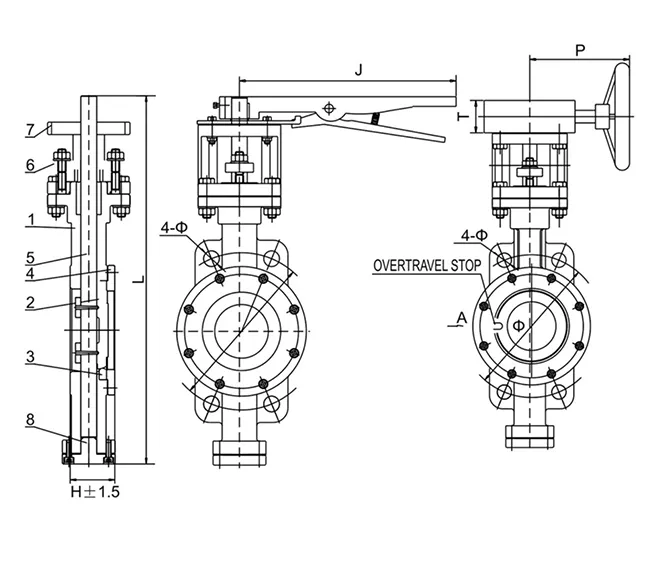Dec . 11, 2024 10:23 Back to list
Industrial Swing Check Valve Applications and Benefits in Fluid Control Systems
Understanding Industrial Swing Check Valves Function, Features, and Applications
In many industrial applications, the proper management of fluid flow is critical to operational efficiency and safety. One fundamental component in controlling this flow is the swing check valve. This type of valve plays a vital role in various systems, ensuring that fluids move in the correct direction while preventing backflow. This article delves into the function, features, and applications of industrial swing check valves.
Function of Swing Check Valves
The primary function of a swing check valve is to allow fluid to flow in one direction while preventing reverse flow. This mechanism is essential in systems where backflow could result in contamination, pressure loss, or even system failure. The valve consists of a disc, a seat, and a body. When fluid flows in the forward direction, the pressure pushes the disc away from the seat, allowing fluid passage. Conversely, if the flow reverses, the disc is pressed against the seat, effectively sealing the valve and stopping backflow.
Design Features
Swing check valves are distinguished by several design features that cater to various applications. Here are some critical elements
1. Disc Design The disc can be made from different materials, including metal, plastic, or composite materials, depending on the application. The disc's design also varies; it may be a full disc or a partial disc, impacting how quickly and effectively the valve closes.
2. Body Configuration Swing check valves are available in various body configurations, including horizontal, vertical, and angle types. This versatility allows for installation in different orientations depending on space and operational requirements.
3. Material Composition The materials used in swing check valves are critical for their performance and longevity. Common materials include stainless steel, brass, PVC, and ductile iron, chosen based on factors such as pressure, temperature, and the type of fluid being handled.
industrial swing check valve

4. Pressure and Temperature Ratings Industrial swing check valves are designed to handle a range of pressures and temperatures, making them suitable for diverse industrial applications. Choosing a valve with the appropriate rating is crucial for system safety and reliability.
Applications of Industrial Swing Check Valves
The applications of swing check valves are vast and varied across multiple industries. Some notable uses include
1. Water and Wastewater Management In municipal water systems, swing check valves play a crucial role in preventing backflow that could contaminate potable water supplies. They are also used in wastewater treatment facilities to control flows effectively.
2. Oil and Gas Industry Swing check valves are widely utilized in pipelines to prevent backflow, protecting equipment and ensuring safe operations. They are particularly valuable in high-pressure and high-temperature environments.
3. Chemical Processing These valves are essential in chemical plants where controlling the direction of flow is critical to avoid hazardous reactions. They help maintain the integrity of the system by preventing backflow that could mix incompatible chemicals.
4. HVAC Systems In heating, ventilation, and air conditioning systems, swing check valves are employed to maintain proper fluid direction and prevent flow reversal, ensuring efficient operation.
Conclusion
Industrial swing check valves are essential components in various systems that manage fluid flow. With their ability to prevent backflow and ensure safe operation, they are indispensable in multiple industries, including water management, oil and gas, chemical processing, and HVAC systems. Understanding their function, design features, and applications can help industries choose the right swing check valves for their specific needs, enhancing efficiency and safety in their operations. As technology evolves, these valves will continue to play a significant role in fluid control systems across various sectors.
Share
-
Reliable Wafer Type Butterfly Valves for Every IndustryNewsJul.25,2025
-
Reliable Flow Control Begins with the Right Ball Check ValveNewsJul.25,2025
-
Precision Flow Control Starts with Quality ValvesNewsJul.25,2025
-
Industrial Flow Control ReliabilityNewsJul.25,2025
-
Engineered for Efficiency Gate Valves That Power Industrial PerformanceNewsJul.25,2025
-
Empowering Infrastructure Through Quality ManufacturingNewsJul.25,2025